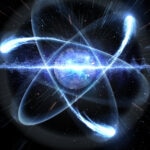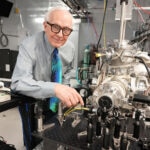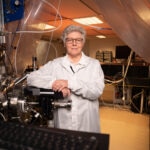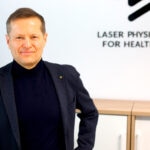The pioneers of 'attosecond physics' win the Frontiers of Knowledge Award
Laser light tools developed by Anne L’Huillier, Paul Corkum, and Ferenc Krausz have led to a new field of research with applications in areas such as electronics, the diagnosis of illnesses, the development of new materials and the search for clean energy sources.

In its 11th edition, the BBVA Foundation Frontiers of Knowledge Award in Basic Sciences was presented to Anne L’Huillier (Lund University, Sweden), Paul Corkum (University of Ottawa, Canada) and Ferenc Krausz (Max Planck Institute of Quantum Optics, Germany). These three pioneers of what is known as ‘attosecond physics’ or ‘attophysic’ have made it possible to observe the movement of subatomic particles over the shortest time scale captured by human beings.
According to the committee, the award recipients, “have shown how to observe and control the motion of electrons in atoms, molecules, and solids with ultrashort light pulses on time scales of about one hundred attoseconds. One attosecond is approximately the time for light to travel across an atom and is the natural scale for electronic motion in matter. This time scale was previously inaccessible to experimental studies.” This time scale was previously inaccessible to experimental studies.”
Astrophysics, Paul Corkum explained, “is about making the fastest measurement that we as humans can make. And that, I think, is what places it at the forefront of knowledge. As the awardee noted, “an attosecond is to a second as a second is to the age of the universe. Can you imagine something as short as that?”

Paul Corkum, BBVA Foundation Frontiers of Knowledge Award in Basic Sciences. - Fundación BBVA
An ultrafast ‘camera’
The tools developed by L’Huillier, Corkum and Krausz act like a camera with a shutter time so dizzyingly ultrafast that it can even capture the movement of an electron that takes 150 attoseconds to circle the nucleus of a hydrogen atom.
“The idea is the same as when you capture the motion of a Formula 1 car or a bullet. You take a series of snapshots and then reconstruct how the bullet actually hits the wall,” Krausz explained. These snapshots can then be reproduced in slow motion to observe the movement in all its detail.
In addition to opening the door to detailed observation of electron movement, their research was able to corroborate a series of predictions formulated decades ago by theoretical physics, which had never been possible to test in a laboratory.
One of these predictions is the so-called ‘tunnel effect’ - a phenomenon predicted by quantum physics in which an electron is able to pass through a barrier which it does not have the energy to surmount. Although there was some evidence that the tunnel effect did really occur, no one had been able to observe its development in real-time. Thanks to the technique developed by the award recipients, the tunnel effect was caught on ‘film’ for the first time.

Anne L’Huillier, BBVA Foundation Frontiers of Knowledge Award in Basic Sciences. - Fundación BBVA
Applications in fields like electronics and biomedicine
Now that attosecond physics has revealed its unquestionable potential, the awardees wish to use it take advantage of it to develop applications in fields such as electronics or biomedicine.
“This field of research is exploding in every direction,” says L’Huillier. For this scientist, the next goal is to move towards the sphere of quantum information science. She is currently studying ways to probe more closely into processes like entanglement, one of the most surprising features of quantum mechanics whereby two separate particles, perhaps even kilometers apart, display a shared behavior that cannot be accounted for by classical physics.
Corkum, meantime, has been using attosecond pulses generated not by single atoms but by sets of atoms of semiconductors such as silicon. Semiconductors are at the heart of modern electronics, and the scientist believes that attophysics can drive a new revolution in computing.
This is an idea shared by Krausz: “Electrons play an extremely important role in nanocircuits, they are responsible for switching the electric current on and off and thus processing information at ever higher speeds. If we want to speed up signal processing to build ever more powerful computers, again, we have to understand how electrons move in these tiny dimensions.”

Ferenc Krausz, , BBVA Foundation Frontiers of Knowledge Award in Basic Sciences. - Fundación BBVA
Krausz has also been exploring the potential of attosecond pulses in the detection of disease. If we remove all the cells from a blood sample, he explains, the fluid we are left with is the blood plasma or serum (depending on the treatment). The molecules it contains provide valuable cues to the donor’s health status, and the scientist is studying ways to use attosecond pulses to extract this information.
“Using incredibly sensitive measurements, we can analyze these molecules with great precision,” he explains, noting that in preliminary studies, “we have been able to detect eight different types of cancers. We have also detected one type of a very severe coronary disease, pre-diabetes, diabetes, and stroke.” These measurements, he believes, could prove game-changing in future for the early diagnosis of multiple conditions.
Results are now being subjected to testing in 10,000 individuals as part of a multi-year clinical trial, and Krausz’s hope is that the system may be operative within the next ten years.